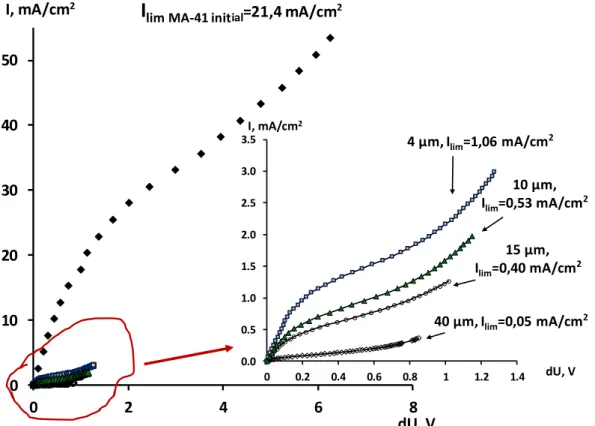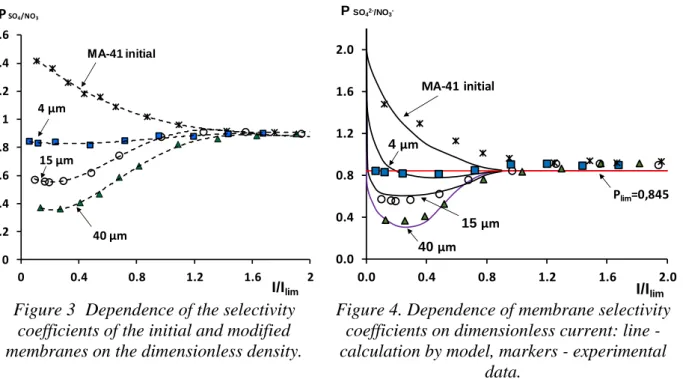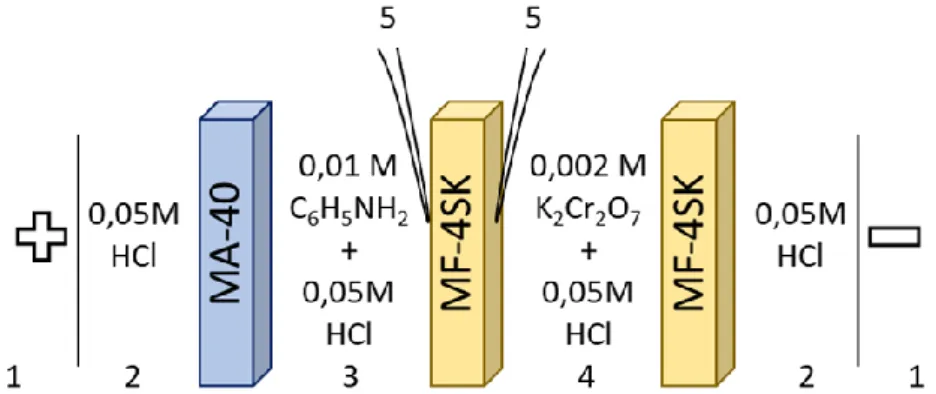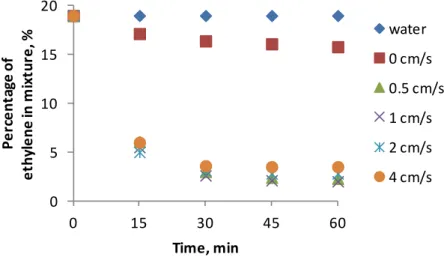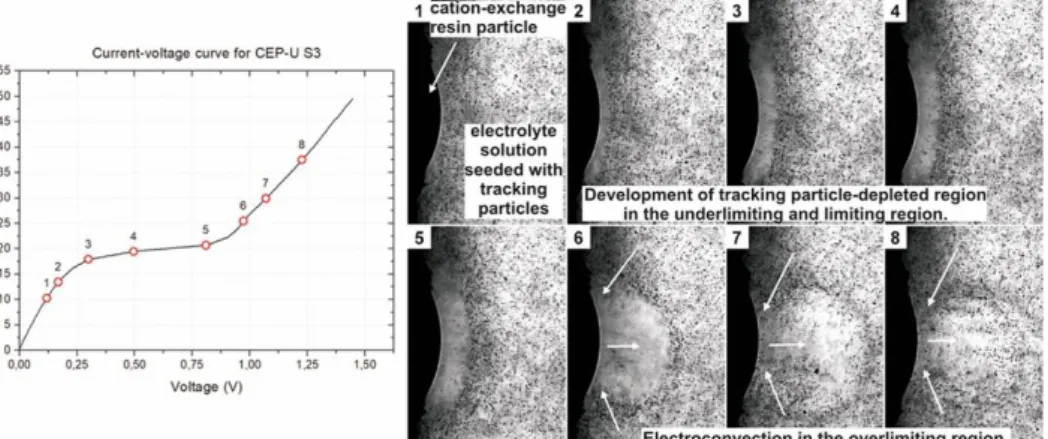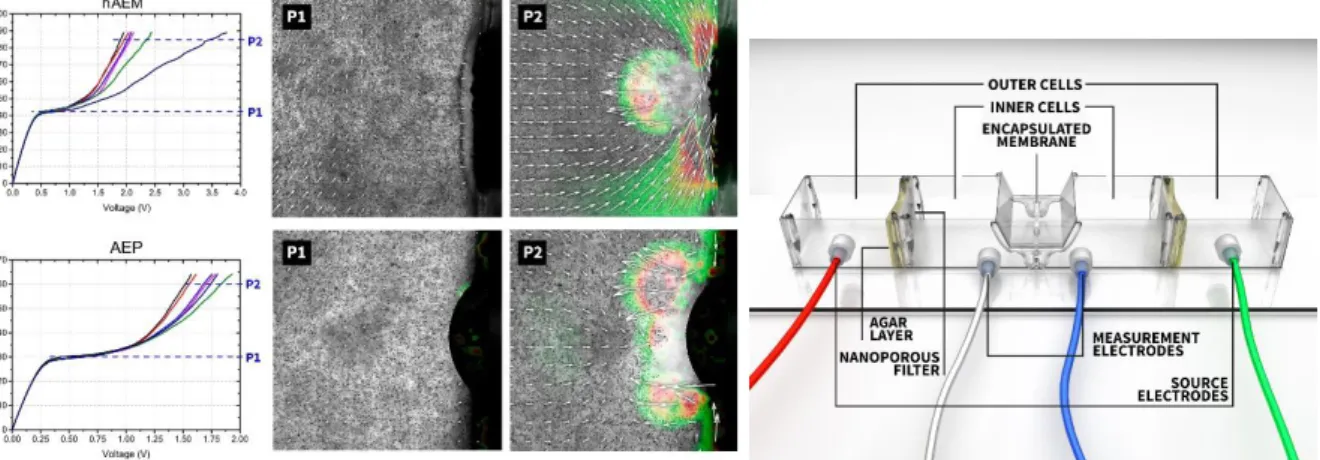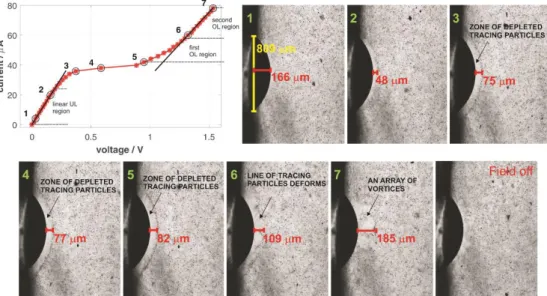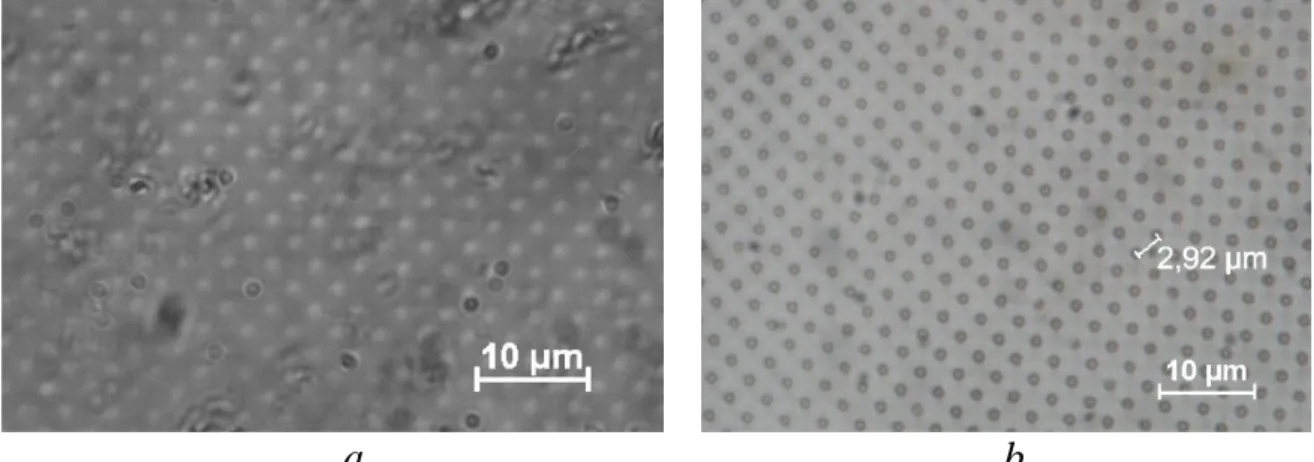RUSSIAN ACADEMY OF SCIENCES RUSSIAN MEMBRANE SOCIETY
MINISTRY OF SCIENCE AND HIGHER EDUCATION OF THE RUSSIAN FEDERATION
RAS SCIENTIFIC COUNCIL ON PHYSICAL CHEMISTRY RUSSIAN MEMBRANE NETWORK
KUBAN STATE UNIVERSITY
KURNAKOV INSTITUTE OF GENERAL AND INORGANIC CHEMISTRY RAS
«MEMBRANE TECHNOLOGY» INNOVATION ENTERPRISE
INTERNATIONAL CONFERENCE
Ion transport in organic
and inorganic membranes-2019
Conference Proceedings
20 – 25 May 2019
2
SCIENTIFIC/ORGANIZING COMMITTEE
Chairman
YAROSLAVTSEVA.B. (Russia) Co-chairmen
ZABOLOTSKIYV.I. (Russia)
POURCELLY G. (
France)
NIKONENKO V.V. (Russia) Scientific secretary
KONONENKO N.A. (Russia)
SHKIRSKAYA S.A.
(Russia)
AGEEV E.P. (
Russia)
RUBINSTEIN I. (Israel)
BAZINET L. (Canada) SHAPOSHNIK V.A. (Russia)
BILDYUKEVICH A.V. (Belarus)
SHELDESHOV N.V. (Russia)
CRETIN M. (
France)
STAROV V.M. (UK)
DAMMAK L. (
France)
TSKHAY A.A. (Kazakhstan)
FILIPPOV A.N. (Russia)
VASIL'EVA V.I. (Russia)
KHOHLOV A.R. (
Russia)
VOLFKOVICH Yu.M. (Russia)
NOVAK L. (Czech Republic)
VOLKOV V.V. (Russia)
OZERIN A.N. (
Russia) VOROTYNTSEV M.A. (Russia)
PISMENSKAYA N.D. (Russia), XU T. (China)
Local organizing committee (Krasnodar, Russia)
ACHOH A.R. KUDASHOVA D.S.
ANDREEVA M.A. LOZA N.V.
BUTYLSKII D.Yu.
ETEREVSKOVA S.I.
LOZA S.A.
MAREEV S.A.
FALINA I.V. MELNIKOV S.S.
GIL V.V. POROZHNYY M.
KOZMAI A.E. RYBALKINA O.A.
Sponsors:
Ministry of Science and Higher Education of the Russian Federation
«MEMBRANE TECHNOLOGY»
INNOVATION ENTERPRISE
3
Preface
This year, Nikolai Petrovich Gnusin would have turned 100 years old; he was born on November 19, 1919.
He actively participated in the Great Patriotic (Second World) War and was awarded an order and multiple medals. So, he began to study at a university (at the Leningrad Technological Institute) only after the War. In 1953, he obtained his PhD degree.
Due to his talents and energy, he obtained the title of professor as early as in 1960. He worked in several republics of the former Soviet Union: in Gomel (Belarus), Novosibirsk (Russia) and Kiev (Ukrane). In 1970, he became the head of the Physical Chemistry Department at the Kuban State University in Krasnodar. In Krasnodar, there was the longest period of his active life. He worked at the university up to 2010.
Even before Krasnodar, Nikolai Petrovich was a world-known scientist. He has published a considerable number of articles and several books. He developed a solid background in experimental methods for studying electrochemical properties of ion- exchange materials and membranes. His famous three-wire conduction model for calculation the conductivity of ion-exchange columns has already appeared.
However, the main research and technological results were obtained in Krasnodar.
Here, Nikolai Petrovich created a well balanced collective, which included chemists, physicians, mathematicians and technologists. His scientific heritage incudes 5 books, about 400 articles and conference abstracts, 30 patents. He prepared over 300 professionals in the field of electro-membrane processes, among them 5 doctors of science and 20 candidates.
Nikolai Petrovich is considered as the Russian father of electrochemistry of ion- exchange resins and membranes. He developed the principles of actual electro- membrane separation processes; he was one of the first scientists who have seen the huge potential of these processes because of increasing gravity of environmental issues, closely associated with the need in low-waste technologies.
He founded our annual Conferences on ion-exchange membranes. The first Conference was organized under powerful leadership of Nikolai Petrovich Gnusin in 1975, Goryachi Klyuch, near Krasnodar. Later on, all the Conferences were held on the Black Sea shore. And now, in 2019, there is the 45
thConference.
The whole life of Nikolai Petrovich was devoted to the construction of a membrane electrochemistry building, which we are trying to continue to build and improve now. We remember and honor the founder of this building.
Organizing committee
4
В этом году Николаю Петровичу Гнусину исполнилось бы 100 лет. Вклад Николая Петровича в мембранную науку и технологии трудно переоценить.
Уже до своего появления в Краснодаре в 1970 г., он был ученым с мировым именем. Им было издано несколько монографий, создан задел в экспериментальных методах изучения электрохимических
свойств ионообменных
материалов и мембран; уже
появилась знаменитая
трехпроводная модель
проводимости. Но основные результаты были получены Николаем Петровичем в Краснодаре. Он выкристаллизовал здесь коллектив так, как это умеют делать химики, выращивая кристаллы нужной структуры. По его плану, в эту структуру должны были входить и химики, и физики, и математики, и технологи. Николай Петрович тщательно отбирал каждую категорию сотрудников. С Виктором Ивановичем Заболоцким он познакомился в Ленинграде, Нинель Петровна Березина приехала из Новосибирска, Александр Иванович Мешечков и Виктор Васильевич Никоненко – из Майкопа. Одними из первых его аспирантов были выпускники престижных московских вузов Владимир Федорович Письменский (МИФИ) и Николай Петрович Борисов (МАИ). Не менее ценные ученики были выращены и в Краснодаре: Геннадий Николаевич Истошин, Николай Викторович Шельдешов, Наталья Анатольевна Кононенко, Наталия Дмитриевна Письменская.
Цементировали коллектив Нина Васильевна Витульская и Елена Вячеславовна Верижская. Фактически в 80-е годы в Краснодаре появился небольшой НИИ Мембран с вполне сбалансированным составом, способный успешно решать как фундаментальные, так и прикладные задачи в области ионообменных мембран.
Приятно сознавать, что дело Николая Петровича продолжает успешно развиваться. Теперь в Краснодаре имеется полноценный Институт Мембран, имеющий несколько лабораторий и насчитывающий более 30 сотрудников. Виктору Ивановичу Заболоцкому, руководителю института, удалось сохранить мультифункциональную структуру коллектива и его эффективность. Постепенно происходит смена поколений при сохранении основных принципов сотрудничества и традиций. Сейчас мы вышли на рубеж, когда сразу несколько молодых ученых приблизились к защите своих докторских диссертаций. Это Светлана Шкирская, Станислав Мельников, Ирина Фалина, Семен Мареев, Антон Козмай. Хотя тематика готовящихся диссертаций по-прежнему вращается вокруг ионообменных мембран, каждый их этих молодых людей вносит свою изюминку, каждый из них своеобразен и оригинален. И у каждого из них уже есть свои, еще более молодые ученики.
Думается, Николай Петрович, наблюдая за развитием своего детища, был бы доволен его сегодняшним состоянием. Мы остаемся благодарны Николаю Петровичу за его энергию и прозорливость, за его уроки − как надо относиться к делу, которому ты служишь, за его доброту и справедливость.
Организационный комитет
5
Харизма профессора Николая Петровича Гнусина
Греческое слово харизма (χάρισμα) переводится как дар.
Это слово представляется до сих пор загадочным и даже мистическим. Обладающие харизмой таинственным образом притягивают к себе людей и заряжают их энергией.
Николай Петрович Гнусин был, несомненно, харизматической личностью. Можно ли проникнуть в загадку его харизмы? В 1967 г. в Москве проходила Всесоюзная научно-техническая конференция по синтезу и применению ионообменных мембран. Организатор этой конференции, профессор, лауреат Государственной премии Кирилл Максимович Салдадзе в загадочном стиле Лайнуса Полинга рассказал о необыкновенном электродиализаторе, созданным коллективом НИИ Пластмасс, но при этом скрыл все его детали. Это надо так уметь. Самым внимательным слушателем конференции был Николай Петрович Гнусин. Ему в это время было 48 лет. Он был в расцвете сил и полон энергии. В заключительный день конференции Николай Петрович предложил раскрыть все секреты таинственного аппарата.
Он сумел извлечь из докладов сотрудников особенности конструкции, свойства мембран и режимы, объединить их так, что они восстали из пепла подобно птице Фениксу. Эффект его выступления был ошеломляющим как для создателей, так и обычных слушателей. Я был свидетелем этого чуда, но уверен, что и раньше он демонстрировал не меньшей силы харизматические поступки. Это очень напоминает известное описание жизни знаменитого ученого Н.В. Тимофеева-Ресовского писателем Д. Граниным в романе «Зубр».
К Николаю Петровичу люди подходили на конференциях не только поздороваться, но и как бы за благословлением на добрые дела. С такими же намерениями я приехал к нему в 1973 г. в Краснодар и он, узнав, что у меня многотысячная картотека литературы на перфокартах, пригласил прочитать лекции. Встречи в Краснодаре и Воронеже стали ежегодными. Они оказали на меня такое воздействие, что, несмотря на различные подходы к большинству проблем, полагаю, что, если мне и удалось что-то сделать полезное, то больше всего обязан этим Николаю Петровичу. С Николаем Петровичем мы встречались не только на конференциях, лекциях и защитах диссертаций.
Особую роль играли неформальные контакты. С Николаем Петровичем мы
плавали по воронежским рекам на байдарке, собирали грибы. Особенно
поражало то, что черные грузди он мог видеть даже под землей.
6
Знаете ли вы еще хотя бы одного крупного ученого, который, как Николай Петрович, мог придти к концу футбольной встречи, в которой играл Виктор Иванович Заболоцкий, Николай Петрович Борисов и я, с авоськой пива и потом по-дружески с нами беседовать? Однако это отнюдь не значит, что Николай Петрович был мягкотелым. Он мог жестко разговаривать и с директором предприятия, и с ректором университета, а главное, отстаивать интересы своего коллектива. Николай Петрович не был членом правящей КПСС и был предан истинным идеям народовластия.
У каждого из нас своя информация о Великой Отечественной войне.
Молодое поколение чаще всего её получало от уставших ветеранов, в глазах которых потух блеск глаз, еще недавно бывший столь ярким. Великий закон сохранения энергии имеет еще одно малоизвестное следствие. Энергия лидера не исчезает, а сохраняется в его учениках. Глядя на дела его многочисленных учеников можно сделать вывод, что энергия даже умножается во времени вопреки стандартным законам природы. Николай Петрович был на передовой всю блокаду Ленинграда, и он неоднократно рассказывал о событиях того трудного времени. Во время последней беседы с ним незадолго до кончины мне удалось найти вопрос, который больше, чем обычные рассказы о баталиях, позволил живо представить реальность событий. Я спросил его: «Где Вы зимой в холода спали, если не было блиндажа?». Он ответил, что снимали с орудия чехол, клали его на снег и ложились. На вопрос болели ли солдаты, он ответил, что из первого набора расчета орудия он остался один в живых. От этого ответа страшное военное время приблизилось и осталось навечно в памяти. Его жена, Бела Яковлевна, с которой он тогда еще не был знаком, отказалась от эвакуации и работала вблизи операционной медсестрой. Она не могла забыть сотни, а может быть и больше, отломанных отмороженных пальцев, отпиленных ног. Для того чтобы понять их жизни, как и других истинных героев войны, это знать совершенно необходимо.
В пьесе лауреата Нобелевской премии Мориса Метерлинка «Синяя птица»
внуки встретили умерших дедушку и бабушку, удивились, что им удалось так сохраниться после смерти. На что они ответили: «Это потому что вы помните о нас». Мы помним Николая Петровича, о чем свидетельствует эта конференция, посвященная столетию его рождения. Если открыть алфавитный указатель РИНЦ, то мы увидим, что индекс Хирша Николая Петровича Гнусина в настоящее время равен 20, а число ссылок на его работы за последние пять лет, когда его уже не было с нами, составило 604. Это значит, что он живет не только в нашей памяти, но и в делах большого множества ученых. Всю жизнь буду гордиться тем, что однажды он меня назвал своим другом. Большей почести для меня быть не может.
Владимир Алексеевич Шапошник
Воронежский государственный университет,
г. Воронеж,
E-mail: v.a.shaposhnik@gmail.com
7
К 100-летию со дня рождения Николая Петровича Гнусина
Николай Петрович Гнусин – выдающийся электрохимик. В 1965 г. на Всероссийской конференции по электрохимии в г. Тбилиси он впервые сделал доклад об электрохимии иони- тов как новом научном направлении.
И с тех пор посвятил свое творчество именно ему.
Основной вклад Николая Петровича и его школы в науку электрохимию состоит в формировании фундаментальных представлений об электропроводности ионообменных материалов. Сформулирована и математически описана трехпроводная модель ионного переноса тока. На ее основе реализованы промышленные установки для обессоливания воды, удаления, извлечения, концентрирования, конверсии веществ.
Он создал крупную научную школу, создал кафедру физической химии в Кубанском государственном университете, объединил ежегодными международными научными конференциями заинтересованных специалистов многих стран. В моей жизни Николай Петрович сыграл большую роль.
Неоднократно выступал оппонентом, поддерживая исследования по металл- ионообменным нанокомпозитам в Воронежском государственном университете. Был оппонентом по моей докторской диссертации, защита которой проходила в Ленинградском государственном университете. И спустя много лет, мне предоставилась честь оппонировать математическую трехпроводную модель в диссертации, руководителем которой был Николай Петрович.
Я глубоко признательна заведующему кафедрой физической химии Кубанского государственного университета Виктору Ивановичу Заболоцкому и всем сотрудникам этой замечательной кафедры за плодотворное продолжение дела, начатого великим Николаем Петровичем Гнусиным, добрую память о нашем общем учителе.
Тамара Александровна Кравченко Заслуженный деятель науки РФ,
доктор химических наук,
профессор кафедры физической химии
Воронежского государственного университета
8
9
Contents
1. Emil Abdrashitov, Dina Kritskaya, Veslav Bokun, Ardalion Ponomarev, Ksenia Novikova, Evgeny Sanginov, Yury Dobrovolsky Synthesis and properties of ion-exchange membranes based on ultra high- molecular weight polyethylene (Chernogolovka, Russia)
21
2. Emil Abdrashitov, Dina Kritskaya, Veslav Bokun, Ardalion Ponomarev, Ksenia Novikova, Evgeny Sanginov, Yury Dobrovolsky Synthesis and transport properties of ion exchange mem-branes based on porous polytetrafluoroethylene films and sulphonated polystyrene (Chernogolovka, Russia)
24
3. Aslan Achoh, Stanislav Melnikov, Konstantin Lebedev, Victor Zabolotskiy Electrochemical characteristics and specific selectivity of bilayer ion-exchange membranes in ternary (sulfate/nitrate) solutions (Krasnodar, Russia)
27
4. Elmara Akberova, Vera Vasil'eva, Elena Goleva, Denis Kostylev SEM- diagnostics of changes in the microstructure of the heterogeneous anion- exchange membrane MA-40 after electrodialysis reversal of mineralized natural water (Voronezh, Russia)
30
5. Rihab Belhadj Ammar, Takoua Ounissi, Lasâad Dammak, Emna Selmane Bel Hadj Hmida Novel nitrate selective anion-exchange membranes: synthesis and tests dialysis (Tunis El Manar, Tunisie; Thiais, France)
33
6. Marina Andreeva, Natalia Kutenko, Natalia Loza Correlation between polyaniline synthesis conditions into MK-40 membrane and current- voltage curves of composites (Krasnodar, Russia)
34
7. Marina Andreeva, Natalia Loza, Natalia Kononenko, Sergej Timofeev Influence of polymerization time during polyaniline synthesis into MF-4SK membrane on current-voltage curves of obtained composites (Krasnodar, Russia)
36
8. Anatoly Antipov, Mikhail Vorotyntsev Multielectron oxidizer redox- mediated autocatalysis for hydrogen-bromate redox flow batteries (Moscow, Russia; Dijon, France)
38
9. Artem Bagishev, Ivan Kovalev, Mikhail Popov, Alexander Nemudry Development of microtubular solid oxide fuel cells (Novosibirsk, Russia)
41 10. Irina Bagryantseva, Valentina Ponomareva, Anna Gaydamaka Proton
conductor electrolytes based on cesium dihydrogen phosphate and thermally stable polymers (Novosibirsk, Russia)
42
11. Victor Bayandin, Nina Shaglaeva New ion-exchange materials based on copolymers of divinylsulfide (Irkutsk, Russia)
43 12. Stepan Bazhenov, Margarita Kostyanaya, Vladimir Vasilevsky, Alexey
Nikitin, Igor Sedov, Alexey Volkov Membrane absorption of ethylene from hydrocarbon gaseous media (Moscow, Chernogolovka, Russia)
45
13. Stepan Bazhenov, Maryam Madumarova, Margarita Kostyanaya, Eduard Novitsky Gas-liquid hollow fiber membrane contactors for CO2
desorption from monoethanolamine solutions (Moscow, Russia)
48
10
14. Myriam Bdiri, Asma Ben Sghaier, Lobna Chaabane, Christian Larchet, Lasâad Dammak Enzymatic cleaning of fouled cation-exchange membranes used in electrodialysis of beverages in food industry (Thiais, France)
51
15. Tomáš Belloň, Petr Polezhaev, Zdeněk Slouka Experimental observation of phenomena developing on anion-exchange membrane during current- voltage measurement (Praha, Pilsen, Czech Republic)
53
16. Tomáš Belloň, Petr Polezhaev, Zdeněk Slouka Investigation of behavior of a heterogeneous anion-exchange membrane and single anion-exchange resin particle in the presence of ssdna using optical measurements (Praha, Pilsen, Czech Republic)
54
17. Tomáš Belloň, Petr Polezhaev, Zdeněk Slouka The influence of size and charge of counterions on the behavior of a cation-exchange system (Praha, Pilsen, Czech Republic)
55
18. Tomáš Belloň, Petr Polezhaev,Lucie Vobecká, Zdeněk Slouka Micro and milifluidic systems as tools for studying electrokinetics and ion transport in ion-exchange systems (Praha, Czech Republic)
56
19. Olga Belobrovaya, Victor Galushka, Igor Galushka, Andrei Karagaichev, Anton Mantsurov, Valentina Polyanskaya, Denis Terin The influence in situ gamma rays of chemical processes fabrication nanoscale porous silicon and its perspectives applications (Saratov, Russia)
59
20. Vladimir Berezkin, Sergey Bedin, Alexander Vasiliev, Yuriy Grigoriev, Vladimir Nazmov Regular track membranes – production and application prospects (Moscow, Novosibirsk, Russia)
61
21. Denis Bondarev, Alexander Bespalov, Victor Zabolotskiy, Svetlana Eterevskova The study of electrochemical stability of the anion-exchange membranes MA-41 modified by poly- N,N –diallylmorpholinium (Krasnodar, Russia)
64
22. Katsiaryna Burts, Tatiana Plisko, Alexandr Bildyukevich, Guoqiang Li, Joanna Kujawa, Wojciech Kujawski Preparation of thin film composite membranes for peRvaporation via interfacial polymerization technique (Minsk, Belarus; Torun, Poland)
66
23. Anastasia But, Victor Zabolotskiy, Anna Kovalenko, Makhamet Urtenov, Vera Vasil'eva Heterogeneous membrane with dominant electroconvection at work under intensive current conditions (Krasnodar, Voronezh, Russia)
69
24. Dmitrii Butylskii, Semyon Mareev, Christian Larchet, Lasâad Dammak, Victor Nikonenko Experimental study of surface morphology of ion-exchange membranes and its impact on the membrane electrochemical characteristics (Krasnodar, Russia; Thiais, France)
72
25. Dmitrii Butylskii, Daria Chuprynina, Tongwen Xu, Natalia Pismenskaya Membrane specific permselectivity in mixed solutions (Krasnodar, Russia; Hefei, China)
74
26. Sergey Bychkov, Elena Shubnikova, Mikhail Popov, Stanislav Chizhik, Alexander Nemudry Modeling of oxygen transport in hollow fiber membranes (Novosibirsk, Russia)
75
11
27. Ladislav Čopák, Anastasia Bocharova Treatment of acidic wastewater using membrane technologies (Stráž pod Ralskem, Czech Republic;
Krasnodar, Russia)
76
28. Ekaterina Dankovtseva, Irina Falina Diffusion permeability of ion- exchange membranes in solutions of sulfuric acid and chromium sulfate (Krasnodar, Russia)
79
29. Yuliya Dzyazko, Vladimir Ogenko, Yury Volfkovich, Valentin Sosenkin, Katerina Kudelko, Tatiana Yatsenko Multifuctional composite adsorbent based on hydrated zirconium dioxide containing nanoparticles of oxidized graphene (Kyiv, Ukraine; Moscow, Russia)
81
30. Irina Falina, Vera Kolenkevich, Natalia Loza Diffusion permeability of the modified ion-exchange membranes in sodium, calcium and magnesium chloride solutions (Krasnodar, Russia)
84
31. Irina Falina, Irina Myakinchenko, Olga Demina Asymmetry of diffusion permeability of bilayer ion exchange membranes, modified by polyaniline (Krasnodar, Russia)
86
32. Ilia Faykov, Vera Nesterova, Alexandra Pulyalina, Irina Podeshvo, Galina Polotskaya Thermally rearranged polymer membranes for bioalcohol purification (St. Petersburg, Russia)
88
33. Anatoly Filippov, Tamara Philippova Impact of external electric field on hydrodynamic permeability of a charged porous layer (membrane) (Moscow, Russia)
91
34. Anatoly Filippov, Svetlana Shkirskaya Simultaneous verification of the cell model for electroosmotic permeability and electrical conductivity of cation-exchange membrane (Moscow, Krasnodar, Russia)
94
35. Igor Gainutdinov, Igor Zilberberg, Alexander Nemudry The ionic motion and structure features of modified cobaltites at different temperatures – ab initio molecular dynamic simulation (Novosibirsk, Russia)
97
36. Georgy Ganchenko, Natalya Ganchenko, Evgeny Demekhin About features of electroconvection near non perfectselective ionexchange membranes (Krasnodar, Russia)
98
37. Natalya Ganchenko, Maria Repina, Dmitri Oksuz’an Mathematical modeling of how gravitational effects influence overlimiting current regime (Krasnodar, Rostov-on-Don, Russia)
100
38. Violetta Gil, Mikhail Porozhnyy Effect of water splitting rate on the intensity of electroconvection and space charge region characteristics (Krasnodar, Russia)
102
39. Daniel Golubenko, Andrey Yaroslavtsev Development of anion- exchange membrane based on grafted copylimer of polystyrene and uv- irradiated polymethylpentene (Moscow, Chernogolovka, Russia)
105
40. Georgy Golubev, Ilya Eremeev, Ilya Borisov, Vladimir Vasilevsky, Alexey Volkov Porous condenser for thermo-membrane separation processes of aqueous media (Moscow, Russia)
107
41. Georgy Golubev, Ivan Podtynnikov, Stepan Bazhenov, Ilya Borisov Regeneration of triethylene glycol by thermopervaporation with porous condenser (Moscow, Russia)
110
12
42. Andrey Gorobchenko, Semyon Mareev Impact of current density distribution in electrodialysis system on transition time of chronopotentiograms (Krasnodar, Russia)
113
43. Vitaly Gudza,Natalja Chubyr, Anna Kovalenko, Makhamet Urtenov Mathematical modeling of the influence of dissociation/recombination reaction of water molecules on the binary salt ions transport taking into account thermal effects (Krasnodar, Russia)
116
44. Vladimir Gursky, Sergey Timofeev Self-oscillation process during the diffusion of co-ions through ion-exchange membranes (Sosnovy Bor, Saint- Petersburg, Russia)
119
45. Evgenia Grushevenko, Ivan Podtynnikov, Olga Scharova, Alina Knyazeva, Ilya Borisov Polydecylmethylsiloxane-based thin film composite membrane with enhanced organic selectivity (Moscow, Russia)
120
46. Tatsiana Hliavitskaya, Alexandr Bildyukevich, Lyudmila Rozhdestvenska, Yuliya Dzyazko Effect of kollidon on the structure and properties of PES membranes (Minsk, Belarus; Kyiv, Ukraine)
123
47. Tatyana Karpenko, Anastasya Boyarishcheva, Nikita Kovalev, Alina Shpak, Nikolay Sheldeshov, Victor Zabolotskiy Investigation of the transport of ions and molecules of organic acids and bases through bipolar membranes (Krasnodar, Russia)
125
48. Natalia Kartashova, Dmitriy Konev, Pavel Loktionov, Anatoly Antipov, Pavel Chukanov, Kseniya Kolobkova, Olga Goncharova, Mikhail Vorotyntsev Investigation of the charge-discharge characteristics of a hydrogen-bromate flow-battery in various modes (Moscow, Chernogolovka, Russia; Dijon, France)
128
49. Victor Kasperchik, Ala Yaskevich, Alexandr Bildyukevich Applying of hybrid membrane-coagulation methods for surface water treatment (Minsk, Belarus)
130
50. Ruslan Kayumov, Evgeny Sanginov, Alexander Karelin, Yury Dobrovolsky Physico-chemical properties of protonated and salt forms of the Nafion membranes plasticized with aprotic solvents (Сhernogolovka, Russia)
132
51. Daria Khanukaeva, Anatoly Filippov, Pramod Kumar Yadav, Ashish Tiwari Hydrodynamic permeability of a fibrous membrane modelled as a package of composite solid-porous cylindrical cells in micropolar flow (Moscow, Russia; Uttar-Pradesh, Rajasthan, India)
135
52. Anastasiia Kharina, Tatiana Eliseeva, Alexandra Tikhaya The peculiarities in electrodialysis of tryptophan - mineral salt solution (Voronezh, Russia)
138
53. Kseniya Kim, Olga Kozaderova, Sabukhi Niftaliev Degradation of ion- exchange membranes in electrodialysis wastewater production of mineral fertilizers (Voronezh, Russia)
140
54. Evgenia Kirillova, Anna Kovalenko Mathematical modeling, numerical and asymptotic solution of the boundary problems of membrane systems taking into account the water splitting in intensive current modes (Wiesbaden, Germany; Krasnodar, Russia)
141
13
55. Sofia Kleinikova, Konstantin Gor'kov, Ekaterina Zolotukhina Acetaldehyde electro-oxidation on silver catalysts in aqueous ethanol solutions (Chernogolovka, Moscow, Russia)
144
56. Anastasia Klevtsova, Yuliya Yakovleva, Natalia Pismenskaya The effect of the pH of the desorbing NaCl solution on the degree of extraction of anthocyanins from cation- and anion exchange resin (Krasnodar, Russia)
146
57. Tatyana Kolganova, Anastasia Yelnikova, Ekaterina Lapshina,Anna Parshina, Ekaterina Safronova, Olga Bobreshova Potentiometric multisensory systems with hybrid materials based on perfluorosulfonic cation-exchange membranes for determination of drugs in pharmaceuticals (Voronezh, Moscow, Russia)
148
58. Denis Kolot, Aslan Achoh Study of transport characteristics of perfluorinated MF-4SK membrane in sulfate / nitrate solutions (Krasnodar, Russia)
149
59. Natalia Kononenko, Anatoly Filippov, Sergey Dolgopolov, Mariya Salaschenko Asymmetry of current-voltage characteristics of bi-layer hybrid perfluorinated membranes in sodium chloride solution (Krasnodar, Moscow, Russia)
152
60. Andrey Kononov, Victor Nikonenko Evaluation of applicability of the teorell-meyer-sievers model to describe the sorption and kinetic properties of ion-exchange membranes (Krasnodar, Russia)
154
61. Andrey Kononov, Veronika Sarapulova, Semyon Mareev Influence of ion transport in ion-exchange membrane bulk on the shape of chronopotentiometric curves (Krasnodar, Russia)
155
62. Alexander Korzhov, Anastasia But, Victor Zabolotskiy Study of the decarbonization process in an electrodializer with bipolar membranes (Krasnodar, Russia)
157
63. Alexander Korzhov, Sergey Loza, Kristina Dmitrieva, Ilya Bondarenko, Victor Zabolotskiy Electrochemical wastewaters treatment in metallurgical enterprises by the example electrodialysis of sulphate- vanadium solusion (Krasnodar, Russia)
159
64. Margarita Kostyanaya, Danila Bakhtin, Viktoria Ignatenko, Stepan Bazhenov, Tatiana Anokhina Gas-liquid contactors based on cellulose for desorption of CO2 from industrial physical absorbant (Moscow, Russia)
161
65. Diana Kotova, Svetlana Vasil'eva, Tatiana Krysanova, Anna Sokruykina The role of solvent during adsorption of α - tocopherol on clinoptilolite (Voronezh, Russia)
164
66. Anna Kovalenko, Makhamet Urtenov Problems of sustainable calculation of theoretical current-voltage characteristics, chronopotentiograms and chronogalvanograms for a membrane channel with forced convection, reactions of water dissociation/recombination and electroconvection (Krasnodar, Russia)
167
67. Anna Kovalenko,Makhamet Urtenov, Alexander Pismenskiy, Natalia Seidova, Konstantin Sobchenko, Natalja Chubyr Software package for the analysis of time series in electro-membrane systems (Krasnodar, Russia)
170
14
68. Ivan Kovalev, Mikhail Popov, Marat Sharafutdinov, Alexander Titkov, Sergey Bychkov, Alexander Nemudry Direct AC/DC heating of hollow fiber membranes (Novosibirsk, Russia)
173
69. Nikita Kovalev, Tatyana Karpenko, Nikolay Sheldeshov, Victor Zabolotskiy Influence of type of bipolar cation-exchange and anion- exchange membranes on the characteristics of the process of producing sulfurate acid and sodium hydroxide from sodium sulfate (Krasnodar, Russia)
174
70. Tatyana Kovrigina, Tulegen Chalov, Edil Ergozhin Synthesis of anion- and cation-exchange membranes by chemical modification of films-matrix (Krasnodar, Russia)
177
71. Olga Kozaderova, Oleg Kozaderov, Kseniya Kim, Sabukhi Niftaliev Electrodialysis of ammonia-containing aqueous solutions (Voronezh, Russia)
180
72. Anton Kozmai, Svetlana Zyryanova, Victor Nikonenko Modelling of anion-exchange membrane transport properties with taking into account the change in exchange capacity and swelling when varying bathing solution concenration and pH (Krasnodar, Russia)
183
73. Tamara Kravchenko, Lev Polyanskii, Dmitrii Konev, Dmitrii Vakhnin Theory and practice of water deoxygenation by metal-ion exchange nanocomposites (Voronezh, Russia)
186
74. Vitalii Kravtsov, Irina Kulikova, Artem Bessonov, Ivan Evdokimov Study of membrane fouling during acid whey bipolar electrodialysis (Stavropol’, Russia)
189
75. Vyacheslav Krysanov, Natalia Plotnikova, Anastasia Okushko Role of ion exchange matrix in process of reducing sorption of molecular oxygen by metalcontaining nanocomposites (Voronezh, Russia)
192
76. Darya Kudashova, Irina Falina, Natalia Kononenko Influence of stabilizers on the morphology of platinum dispersion on the surface of perfluorinated membrane (Krasnodar, Russia)
195
77. Mukesh Kumar Fluid flow through membrane: An analytical approach for Navier-Stokes equation by Lie symmetry analysis (Prayagraj, India)
197 78. Alexandra Kuriganova, Nikita Faddeev, Igor Leontyev, Nina Smirnova
Pulse alternating current synthesis of Pd/C catalysts and their application in PEM fuel cells thechnologies (Novocherkassk, Rostov-on-Don, Russia)
198
79. Anastasiia Kuznetsova, Lyudmila Ermakova, Anna Volkova, Tatiana Antropova Transport characteristics of porous glass membranes in electrolyte solutions (St. Petersburg, Russia)
199
80. Sergey Lakeev, Ann Korneyсhuk, Polina Semina, Nina Kozlova, Alexander Khorokhorin, Alexander Smolyanskii Properties of interference patterns in the transmission spectra of nuclear filters prepared from the polyethylenerephthalate films irradiated by xenon ions (Moscow, Krasnoyarsk, Russia)
202
81. Alyona Larkina, Alexandra Pulyalina, Galina Polotskaya, Ludmila Vinogradova Purification of n-butanol from aqueous solutions using novel pervaporation membranes based on polymer composites (Saint Petersburg, Russia)
205
15
82. Denis Lebedev, Maksim Novomlinsky, Vladimir Kochemirovsky, Tatiana Antropova, Irina Anfimova Study of mechanisms of the ions tranosport in active nanofiltrational membranes containing gold nanoparticles (St. Petersburg, Russia)
208
83. Sergey Loza, Kristina Dmitrieva, Alexander Korzhov, Nikita Smyshliaev, Nazar Romanyuk, Ilya Bondarenko, Natalia Loza Obtaining electric energy by reverse electrodialysis (Krasnodar, Russia)
210
84. Sergey Loza, Stanislav Utin, Natalia Loza, Victor Dotsenko Transport characteristics of bilayered profiled membranes modified by superbranched polymers (Krasnodar, Russia)
212
85. Aleksandr Lysenko, Olga Astashkina, Nadezhda Diankina Sorption active carbon membranes (Saint Petersburg, Russia)
214 86. Anna Lysova, Andrey Yaroslavtsev Proton-conducting hybrid
membranes based on polybenzimidazoles and silica with imidazoline- functionalized surface (Moscow, Russia)
215
87. Aleksandra Lytkina, Natalia Zhilyaeva, Natalia Orekhova, Margarita Ermilova, Nina Shevlyakova, Vladimir Tverskoy, Andrey Yaroslavtsev C4 hydrocarbons seporation through the polyethylene-graft-sulfonated polystyrene membranes (Moscow, Russia)
217
88. Mariia Makhonina, Kseniia Otvagina, Nail Yanbikov, Andrey Vorotyntsev, Alla Mochalova, Ilya Vorotyntsev Utilization of gasseparation membranes based on polyelectrolytes (Nizhniy Novgorod, Russia)
220
89. Alexander Malakhov, Stepan Bazhenov Gas separation in a membrane contactor with a reversible reaction of a gas with an absorbent: experiment and model (Moscow, Russia)
223
90. Semyon Mareev, Dmitrii Butylskii Effect of surface charge of ion- exchange membrane on its electrochemical characteristics (Krasnodar, Russia)
226
91. Semyon Mareev, Svetlana Zyryanova, Christian Larchet, Lasâad Dammak, Victor Nikonenko Chronopotentiometry of ion-exchange membranes with hydrophobic areas on the surface: 2D simulation and experiment (Krasnodar, Russia, Thiais, France)
228
92. Natalia Matushkina, Nadezda Strusovskaya, Eugene Ageev Peculiarities of behavior of pervoporation membranes from isotactic polypropylene (Moscow, Russia)
229
93. Dmitrii Matveev, Tatyana Plisko, Anton Shustikov, Alexander Bildyukevich, Vladimir Volkov Formation, structure and performance of porous membranes based on acrylonitrile copolymers (Moscow, Russia;
Minsk, Belarus)
232
94. Stanislav Melnikov, Elena Nosova, Anastasia But Wastewater treatment from organic compounds by the example of acetic acid electrodialysis (Krasnodar, Russia)
235
95. Stanislav Melnikov, Svetlana Shkirskaya Current-voltage characteristics of bilayered ion-exchange membranes in sodium chloride solution (Krasnodar, Russia)
238
16
96. Vladislav Menshikov, Sergey Belenov, Leonid Polevoj The activity of trimetallic catalysts with different gold content for methanol electrooxidation (Rostov-on-Don, Russia)
241
97. Arthur Merkel, Martin Ondrušek An integrated process developed for whey demineralization (Stráž pod Ralskem, Czech Republic)
243 98. Elizaveta Moguchikh, Anastasia Alekseenko, Kirill Paperzh, Angelina
Pavlets, Vladimir Guterman The effect of post-processing on the stability of platinum copper electrocatalysts (Rostov-on-Don, Russia)
246
99. Ilya Moroz, Aleksey Rogov, Dmitrii Butylskii, Semyon Mareev, Natalia Pismenskaya Vizualization of electroconvection during electrodialysis of strong electrolyte and ampholyte solutions (Krasnodar, Russia)
248
100. Kamila Mugtasimova, Alexey Melnikov, Alexey Kashin, Vitaliy Sinitsyn Structure – proton transport correlations in perfluorinated sulfopolymer membranes with shorter side chains (Moscow, Russia)
250
101. Andrey Naumov, Pavel Apel, Sergey Kulik, Ivan Eremchev, Dmitry Zagorskiy Optical visualization of filtration process of colloidal particles in track-etched membranes at nano-scale (Troitsk, Dubna, Moscow, Russia)
252
102. Ekaterina Nazyrova, Svetlana Shkirskaya, Anastasiya Norenko, Ekaterina Dankovtseva Selectivity of heterogeneous cation-exchange membranes modified by polyaniline (Krasnodar, Russia)
253
103. Vera Nesterova, Alexandra Pulyalina, Galina Polotskaya Aromatic polyamide membranes for organophilic pervaporation (Saint Petersburg, Russia)
256
104. Vladlen Nichka, Michail Porozhnyy, Svetlana Shkirskaya, Natalia Pismenskaya, Victor Nikonenko Modified microheterogeneous model for describing the electrical conductivity of membranes in diluted electrolyte solutions (Krasnodar, Russia)
259
105. Natalya Niftalieva, Mikhail Popov, Alexander Nemudry Conversion of hydrocarbons using hollow fiber oxygen-permeable membranes (Novosibirsk, Russia)
260
106. Victor Nikonenko, Anna Kovalenko, Elizaveta Evdochenko, Matthias Wessling, Gerald Pourcelly Relationships between electroconvection and water splitting in membrane systems in intensive current regimes (Krasnodar, Russia; Aachen, Germany; Montpellier, France)
261
107. Ksenia Novikova, Nina Smirnova, Yury Dobrovolsky Influence of carbon support on catalytic layer performance of fuel cells (Chernogolovka, Novocherkassk, Russia)
264
108. Eduard Novitsky, Evgenia Grushevenko, Vladimir Vasilevsky, Alexey Volkov The effect of absorbent feeding conditions on the parameters of reverse electrodialysis (Moscow, Russia)
266
109. Ivan Novomlinskiy, Irina Gerasimova, Vadim Volotchaev, Vladimir Guterman Platinum electrocatalysts based on oxide and oxide carbon carriers for fuel cell (Rostov-on-Don, Russia)
269
110. Maksim Novomlinsky, Denis Lebedev, Alena Fogel, Vladimir Kochemirovsky Synthesis of nanoporous membranes with gold nanoparticles by laser-induced deposition (St. Petersburg, Russia)
271
111. Takoua Ounissi, Lasâad Dammak, Christian Larchet, Jean-François Fauvarque, Emna Selmane Bel Hadj Hmida Lithium extraction by
274
17
diffusion dialysis using novel composite membranes (Tunis El Manar, Tunisie; Thiais, France)
112. Iliya Petriev, Ivan Lucenko, Kirill Voronin, Polina Pushankina, Mikhail Baryshev Gas transroptation parameters of membranes modified by star-like palladium nanocrystallites (Krasnodar, Russia)
276
113. Natalia Pismenskaya, Olesya Rybalkina, Kseniia Tsygurina, Ekaterina Melnikova Сoupling between mass transfer and proton generation during electrodialysis of ampholyte-containing solutions (Krasnodar, Russia)
278
114. Alexander Pismenskiy, Mahamet Urtenov, Anna Kovalenko Mathematical modeling of mass and heat transfer during electrodialysis of sodium dihydrophosphate (Krasnodar, Russia)
281
115. Petr Polezhaev, Tomáš Belloň, Lucie Vobecká, Zdeněk Slouka Selectivity of ion-exchange resin particles – the factor of internal structure (Praha, Plzeň, Czechia)
284
116. Valentina Ponomareva,Irina Bagryantseva, Anna GaydamakaStudy of phase composition and electrotransport properties of systems based on mono and disubstituted phosphates of cesium and rubidium (Novosibirsk, Russia)
287
117. Valentina Ponomareva, Konstantin Kovalenko, Elena Shutova, Anastasia Cheplakova, Danil Dybtsev, Vladimir Fedin Study of new proton-conducting materials based on metal organic polymers (Novosibirsk, Russia)
288
118. Alla Reshetnikova, Vladimir Shaposhnik The main role of equipolar contacts ion-exchangers grans in the electrodeionization (Voronezh, Russia)
290 119. Nazar Romanyuk, Sergey Loza, Natalia Loza Сompetitive transfer of
sodium and calcium ions through ion exchange membranes modified by polyaniline (Krasnodar, Russia)
292
120. Olesya Rybalkina, Kseniia Tsygurina, Ekaterina Melnikova, Anton Kozmai, Natalia Pismenskaya Study of protonation-deprotonation reactions in the system anion-exchange membrane / KHT solution using impedance spectroscopy (Krasnodar, Russia)
295
121. Ilya Ryzhkov, Anton Vyatkin, Anastasia Bortsova, Mikhail Simunin, Sofia Kozlova, Valerij Kucheryavyj Switchable ionic selectivity in conductive nanoporous membranes: 1D and 2D mathematical models vs experimental data (Krasnoyarsk, Russia)
298
122. Valentin Sedelkin, Larisa Potekhina, Olga Lebedeva, Marina Schneider, Elmira Ulyanova Research of kinetic transformations of the chemical supremolecular structure in the system: the original raw material - forming solution - filter membrane (Engels, Russia)
301
123. Maxim Shalygin, Alina Kozlova, Alexander Netrusov, Vladimir Teplyakov Vapor-phase membrane method for recovery and concentration of bioalcohols from fermentation broths (Moscow, Russia)
304
124. Vladimir Shaposhnik Conjugate transport of mass and energy in ion exchange membranes by electrodialyse (Voronezh, Russia)
305 125. Nikolay Sheldeshov, Victor Zabolotskiy, Konstantin Lebedev Transfer
processes in membrane systems used for production acids and bases from their salts by bipolar electrodialysis (Krasnodar, Russia)
307
18
126. Vladimir Shelistov, Elizaveta Frants, Georgy Ganchenko On the features of electrophoresis of charge-selective particles (Krasnodar, Russia)
308 127. Svetlana Shkirskaya, Viktoria Soloshko Water transport in modified ion
exchange membranes (Krasnodar, Russia)
309 128. Inna Shkorkina, Veronika Sarapulova, Olesya Rybalkina Study of
electrochemical characteristics of Fuji Type – X anion exchange membranes produced via electrospinning method (Krasnodar, Russia)
311
129. Ekaterina Skolotneva, Daria Mareeva, Semyon Mareev, Christian Larchet, Lasâad Dammak, Victor Nikonenko Applicability of approximate equations for calculation of the chronopotentiometric transition time in membrane systems with a diffusion layer of finite length (Krasnodar, Russia)
313
130. Ilya Strylets, Denis Terin, Marina Kardash, Tamara Druzhinina Influence of the fiber filler on the sorption characteristics of polymer composites “POLIKON A” (Saratov, Moscow, Russia)
315
131. Valentina Titorova, Veronika Sarapulova, Natalia Pismenskaya, Victor Nikonenko Diffusion pearmability of commercial homogeneous and heterogeneous ion-exchange membranes in NaCl, CaCl2 and Na2SO4
solutions (Krasnodar, Russia)
317
132. Ekaterina Titskaya, Maria Timchenko, Irina Falina, Anastasia Alekseenko The effect of catalyst composition on characteristics of membrane-electrode assemble of hydrogen-air fuel cell (Krasnodar, Russia)
320
133. Sergey Tsipliaev, Denis Terin, Marina Kardash, Igor Galushka, Larisa Karpenko-Jereb, Timur Turaev The investigations of the structure and properties of ion-exchange materials "POLIKON CA" with mosaic-lateral morphology (Saratov, Russia; Graz, Austria)
323
134. Alexandr Tskhay, Yelena Pryatko, Konstantin Kudelya Combined electric baromembrane technology for desalination of the caspian sea water (Almaty, Republic of Kazakhstan)
326
135. Kseniia Tsygurina, Olesya Rybalkina, Ekaterina Melnikova, Gerald Pourcelly, Natalia Pismenskaya Influence of the «facilitated»
diffusion NH3 through the anion-exchange membrane on the rate of water splitting in electrodialysis process (Krasnodar, Russia; Montpellier, France)
327
136. Valery Ugrozov Gas diffusion through structurally inhomogeneous bilayer membrane (Moscow, Russia)
330 137. Artem Ulihin, Nikolay Uvarov, Valentina Ponomareva, Konstantin
Kovalenko, Vladimir Fedin Nanocomposites based on lithium perchlorate in the metal-organic framework matrix (Novosibirsk, Russia)
332
138. Makhamet Urtenov, Victor Nikonenko, Anna Kovalenko, Elizaveta Evdochenko Analysis of the theoretical current-voltage characteristics of a membrane channel (Krasnodar, Russia)
333
139. Aminat Uzdenova, Makhamet Urtenov, Victor Nikonenko Effect of potential of pulsed electric field on average current density in electrodialysis cell: numerical experiment (Krasnodar, Karachaevsk, Russia)
336
140. Dmitrii Vakhnin, Natalya Zheltoukhova, Alina Tregubova, Тamara Kravchenko Oxygen electroredox – sorption by metal ion-exchange nanocomposites. The current effect (Voronezh, Russia)
339
19
141. Vera Vasil'eva, Elmara Akberova Electroconvective instability in systems with heterogeneous membranes ralex with different content of ion- exchanger (Voronezh, Russia)
342
142. Vera Vasil'eva, Mikhail Smagin, Elena Goleva A comparative analysis of the effect of phenylalanine on physicochemical, structural and transport characteristics of profiled heterogeneous ion-exchange membranes MK-40 and MA-40 (Voronezh, Russia)
344
143. Lucie Vobecká, Zdeněk Slouka Water splitting at ion-exchnage resin particles and the heterogeneous ion-exchange membranes (Prague, Czech Republic)
347
144. Yury Volfkovich Activated carbons as nanoporous electron-ion exchangers with hydrophilic - hydrophobic properties (Moscow, Russia)
350 145. Yury Volfkovich, Аlexey Mikhalin, Аlexey Rychagov, Valentin
Sosenkin, Мarina Kardash, Natalya Kononenko, Sergei Tsipliaev, Svetlana Shkirskaya Influence of the manufacturing method of mosaic cation – anion - exchange membranes on the characteristics of capacitive deionization of water (Moscow, Engels, Krasnodar, Russia)
353
146. Vitaly Volkov, Alexander Chernyak, Olga Yarmolenko, Vladimir Tverskoy, Daniel Golubenko Hydration and ionic transport in ion exchange membranes on NMR data (Chernogolovka, Moscow, Russia)
356
147. Bogdan Voloshin, Sergey Bychkov, Stanislav Chizhik, Alexander Nemudry Study of oxygen transport in grossly nonstoichiometric oxides via oxygen partial pressure relaxation technique (Novosibirsk, Russia)
359
148. Bogdan Voloshin, Mikhail Popov, Sergey Bychkov, Stanislav Chizhik, Alexander Nemudry Analysis of kinetic and thermodynamic properties of non-stoichiometric oxides in reaction with oxygen using the conception of continuous homologuos series (Novosibirsk, Russia)
360
149. Daria Voropaeva, Daniel Golubenko, Ardalion Ponomarev, Andrey Yaroslavtsev Plastisized polymer electrolytes based on sulfonated polystyrene: solvation and Li+/Na+ conductivity (Moscow, Russia)
361
150. Mikhail Vorotyntsev, Anatoly Antipov, Dmitry Konev Surprising dependence of the current density of bromate electroreduction on the microelectrode radius (Moscow, Chernogolovka, Russia; Dijon, France)
363
151. Anton Vyatkin, Anastasia Bortsova, Mikhail Simunin, Maksim Mishnev, Ilya Ryzhkov Experimental study of switchable ion transport in carbon coated nanoporous alumina membranes (Krasnoyarsk, Russia)
366
152. Pramod Kumar Yadav Motion through non-homogeneous porous medium: hydrodynamic permeability of membrane composed by cylindrical particles (Prayagraj, India)
369
153. Nail Yanbikov, Kseniia Otvagina, Tatyana Sazanova, Alexandr Logunov, Ilya Vorotyntsev Gas separation properties of silica-organic polymer membranes modified by plasma and ozone exposure (Nizhniy Novgorod, Russia)
370
154. Andrey Yaroslavtsev Membrane materials in modern energy (Moscow, Chernogolovka, Russia)
372 155. Polina Yurova, Irina Stenina, Andrey Yaroslavtsev Homogeneous cation
exchange membranes modified by pedot: synthesis and properties (Moscow, Russia)
375
20
156. Yana Yutskevich, Sergey Mikhaylin, Anton Kozmai, Natalia Pismenskaya Application of continuous-flow electrophoresis to separate b- lactoglobulin hydrolysate (Krasnodar, Russia; Québec, Canada)
377
157. Dmitry Zagorskiy, Sergei Kruglikov, Sergei Bedin, Ilia Doludenko, Alexandr Shatalov, Dmitry Cherkasov, Dmitry Panov Features of galvanic deposition of multicomponent metallic nanowires in porous of track etched membranes (Moscow, Russia)
380
158. Vladimir Zhdanov, Alexander Larin Effect of surface diffusion on separation of gas mixtures in nanosized porous membranes (Moscow, Russia)
383
159. Umirzak Zhusipbekov, Gulzipa Nurgalieva, Zamira Bayakhmetova, Aynur Shakirova, Dulat Duysenbay Sorption of toxic compounds of iron and cobalt from solutions of humine substances (Almaty, Kazakhstan)
386
160. Svetlana Zyryanova, Natalya Terikhova, Lasâad Dammak, Victor Nikonenko Effect of surface morphology on electrochemical characteristics of a homogeneous anion-exchange membrane AMX modified with an inert hydrophobic material (Krasnodar, Russia; Thiais, France)
389
161. Libor Šeda, Ladislav Čopák Heavy metal sulphate salts removal from sulphuric acid solution via diffusion dialysis: pilot scale validation (Stráž pod Ralskem, Czech Republic)
398
21
SYNTHESIS AND PROPERTIES OF ION-EXCHANGE MEMBRANES BASED ON ULTRA HIGH-MOLECULAR WEIGHT POLYETHYLENE
1Emil Abdrashitov, 1,2Dina Kritskaya, 1Veslav Bokun, 1,2Ardalion Ponomarev,
2Ksenia Novikova, 2Evgeny Sanginov, 2Yury Dobrovolsky
1 Chernogolovka Branch of the N.N, Semenov Federal Research Center for Chemical Physics, RAS, Russia, E-mail:dinak@binep.ac.ru
2Institute of Problems of Chemical Physics of RAS, Chernogolovka, Russia, E-mail:kcenia-4@mail.ru
Introduction
Ultra high molecular weight polyethylene (UHMWPE) is a promising polymer matrix for preparation of composite ion-exchange membranes due to its excellent mechanical properties, good chemical and thermal stability. In recent years, we have realized the synthesis of a series of polystyrene (PS) based composites, precursors of ion-exchange membranes, using the styrene ability to both efficient sorption from a solution by certain polymer films and efficient thermal polymerization at elevated temperatures [1]. However, during the synthesis by this method the films should be kept in the styrene solution that causes a side styrene polymerization on the film surface and in the bulk of the solution. All this requires thorough washing of the resulting composites films and leads to high reagent consumptions. In this regard, it seems more promising to carry out the composite synthesis by gas phase styrene polymerization keeping the polymer matrix in the saturated monomer vapor.
Such approach was realized in our previous work [2] allowed successfully modifying of polyvinylidene fluoride (PVDF) film by polystyrene through the vapor phase polymerization, that provide considerably simplifying the synthesis conditions, and reducing procedure time and reagent consumption. By sulfonation of the developed composites the PVDF-sulfonated PS membranes with an ion exchange capacity (IEC) of up to 2.7 mmol g-1 and high proton conductivity were prepared [2].
The aim of this work was to apply the developed method for the preparation of composite membranes based on a UHMWPE matrix and to study their properties.
Experiments
UHMWPE film (SVMPE-1000 grade, by LLC Formoplast, St. Petersburg) with a thickness of 50-100 microns was used as a polymer matrix. The samples fixed in the holder-cartridge were preliminarily kept in the "styrene – polymerization initiator - divinylbenzene" solution. Then the swollen samples were located in the reactor above the level of styrene containing an inhibitor. The reactor with the loaded samples was purged with argon, sealed and thermostated at 110 °C for 1 - 5 hours to conduct styrene polymerization. When finished the composite films were removed from the reactor and thoroughly washed with toluene. The content of PS formed in the matrix (wt.%, rel. to the initial film weight) was determined by the weight gain of the dried samples.
The PS content in the surface layer of the prepared composites was analyzed by ATR-FTIR.
Ion-exchange membranes were obtained by sulfonation of the composite using sulfuric acid. The proton conductivity of the membranes was measured by impedance spectroscopy. For testing the membranes as electrolyte of a hydrogen-air fuel cell (FC) the following conditions were used: T = 25 °C; RHH2 = RHair = 100; gas flow: 0.1 l/min (H2), 0.4 l/min (air); p (H2) = p (air) = 1 atm.
Results and Discussion
It was shown that keeping the UHMWPE films in the styrene vapor during 1–5 h under described conditions leads to the formation of PS inside of the films up to 60 wt. %. The modification of the films was accompanied by a mainly increase in the film thickness and a slight increase in their length and width.
Fig. 1 shows the data on the PS accumulation in the UHMWPE films during the styrene gas phase polymerization at 110 ° C. As can be seen, there is a noticeable the PS content spread, which is associated, possibly, with uncontrolled evaporation of the sorbed monomer during the samples loading into the reactor and outputting the reaction to a steady-state conditions. Nevertheless, it
22
can be concluded that the PS accumulation is almost linearly dependent on the reaction time and is approximately 6 wt.% per h at 110 °C.
DSC data of the UHMWPE-PS composites showed that the PS formation did not change the content of the crystallinity samples. So, it can be conclude, that the styrene polymerization proceeds in the amorphous phase of the polymer matrix.
The PS content in the surface layer of the composites was estimated by ATR-FTIR. For this purpose, the characteristic polystyrene band at 697 cm–1, the out-of-plane deformation vibrations of C–H bonds of the aromatic ring, which does not overlapped by the matrix bands, was used. It was found that the PS content in the surface layer is slightly higher than the average PS content in the bulk composite.
10 20 30 40 50 60 70
0.5 1.0 1.5 2.0 2.5
2
OE, mmol/g
PS, w.%
1
Figure 1. Kinetics of PS accumulation in the UHMWPE films (50 μm) during sorption of styrene from saturated vapor at
110°C.
Figure 2. Dependencies of the experimental (1) and calculated (2) IECs of the UHMWPE-sPS
membranes on the PS content.
Fig. 2 presents the results of the UHMWPE-PS composites sulfonation. The UHMWPE- sulfonated PS membranes (UHMWPE-sPS) with IEC up to 2.6 mmol/g were obtained. According to IR data (Fig. 3) the sulfonation lead to appearance new absorption bands at 1008 and 1040 cm-
1, which were referred to the symmetric stretching vibrations of the –SO3- and C-S vibrations of the aromatic ring of the sulfonated PS. The intensity of these bands increases with increase in the PS content.
960 980 1000 1020 1040 1060 1080 1100 0,02
0,04 0,06 0,08 0,10 0,12 0,14 0,16
4 5 3 2 1
cm-1
Absorbance
50 100 150 200 250 300 350
200 400 600 800 1000
I, mA cm-2 E, mV
20 40 60 80 100
2a 1a
2
P, mWcm -2
1
Figure 3. ATR-FTIR-spectra of UHMWPE-sPS membranes in the Na+ form. The PS content in the composites are 36 (1), 27 (2), 15 (3), and 7
(4) wt. %. 5 – the initial UHMWPE film.
Figure 4. The current-voltage (1, 2) and power (1а, 2а) characteristics of the FC based on the UHMWPE-sPS (1, 1а) and
Nafion-115 (2, 2a) membranes.
1 2 3 4 5 6
5 10 15 20 25 30 35 40
Time, h PS, w. %
